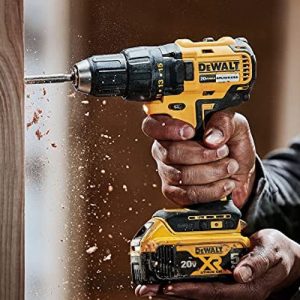 More than one million people are hurt using hand and power tools every year, according to the Consumer Product Safety Commission (CPSC). Not only do people suffer physically, but their injuries also often hurt them financially. Their employers lose money, too. Many of the visits to hospitals and doctors’ offices could be prevented with more attention to hand and power tool safety.
More than one million people are hurt using hand and power tools every year, according to the Consumer Product Safety Commission (CPSC). Not only do people suffer physically, but their injuries also often hurt them financially. Their employers lose money, too. Many of the visits to hospitals and doctors’ offices could be prevented with more attention to hand and power tool safety.
Accidents on the job happen more frequently when employees are doing a repetitive job, something unexpected happens, or they are inexperienced or overconfident about using the tool. These tips for hand and power tool safety help employees stay safe and perform well.
How to Prepare Yourself and Your Space for Staying Safe
Using tools safely includes more than knowing the tools. Employees must pay attention to what they wear, how they carry their tools, and where they stand. To protect employees from the dangers of slips and electrical shock, managers should ensure floors are kept as clean and dry as possible. Tips for hand and power tool safety include choosing the right clothing:
• Do not wear loose clothing or jewelry that can get caught in a tool’s moving parts.
• Stay safe by wearing the appropriate personal protective equipment (PPE), like leather gloves, safety goggles, or face shields.
• Make sure your work area is level and you have good balance when using tools.
• Be aware of the people around you and ensure they stay a safe distance from your workspace.
• Never climb a ladder with a tool in your hand. Instead, find someone on the ground to hoist tools to you with a bucket or bag on a rope.
• Don’t carry pointed tools in your pocket. Carry them in a toolbox or cart instead.
• Use the right tool for the job. For example, don’t use a wrench to pound in a nail when you should be using a hammer.
• When appropriate, secure your project with a clamp or vise to keep it from slipping.
Tips for Hand and Power Tool Safety – Electric Tools
One of the most serious workplace injuries involving tools is an electrical shock from power tools. Electrical shocks can cause heart failure and burns. Sometimes a worker is shocked while on a ladder, then loses their balance and is injured in a fall. Tips for preventing electrical shock are at the top of the list of ways to stay safe using power tools.
• Use tools that are double-insulated or have a three-pointed power cord and are plugged into a power source with a rounded receptacle.
• Do not use electric tools in wet conditions unless they are approved for that use.
• Use a ground fault circuit interrupter (GFCI) or an assured grounding program. Use the appropriate PPI like face protection or leather work gloves.
• Keep your work area dry and clean to avoid slipping while working with or around dangerous electric power tools.
• Be sure to find good footing, maintain balance, and secure your work with clamps or a vise to free both of your hands for the safe use of power tools.
• Never carry portable electric tools by their cords and do not yank them from the power source.
• Prevent accidental starting by keeping your fingers away from the switch button while carrying a power tool.
Choose the Right Tools and Take Care of Them
• Buy quality tools. Hammers with wooden handles are not as safe as those made of steel hand tools. Make sure steel tools are heat-treated.
• Regularly inspect tools to ensure they are in good condition and work properly.
• If you find something wrong with a tool, don’t use it, and report the problem to your manager.
• Perform regular maintenance on your tools, like grinding or sharpening saw blades.
• Always follow the manufacturer’s instructions.
• Keep extra tools handy in case the tool you had planned to use is damaged.
• Make sure to store your tools in a safe place, keeping sharp edges from children and others who may get hurt trying to use the tools.
• When working up high, do not leave tools where they could fall on workers below.


